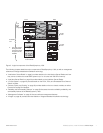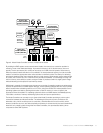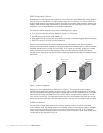
www.hitachi.com BladeSymphony 1000 Architecture White Paper 3
Chapter 1
Introduction
Executive Summary
Blade servers pack more compute power into a smaller space than traditional rack-mounted servers.
This capability makes them an attractive alternative for consolidating servers, balancing or optimizing
data center workloads, or simply running a wide range of applications at the edge or the Web tier.
However, concerns about the reliability, scalability, power consumption, and versatility of conventional
blade servers keeps IT managers from adopting them in the enterprise data center. Many IT
professionals believe that blade servers are not intended for mission-critical applications or compute-
intensive workloads.
Leveraging their vast experience in mainframe systems, Hitachi set out to design a blade system that
overcomes these perceptions. The result is BladeSymphony® 1000, the first true enterprise-class
blade server. The system combines Virtage embedded virtualization technology, a choice of industry-
standard Intel® processor-based blade servers, integrated management capabilities, and powerful,
reliable, scalable system resources — enabling companies to consolidate infrastructure, optimize
workloads, and run mission-critical applications in a reliable, scalable environment.
For organizations interested in reducing the cost, risk, and complexity of IT infrastructure — whether at
the edge of the network, the application tier, the database tier — or all three — BladeSymphony 1000 is
a system that CIOs can rely on.
Introducing BladeSymphony 1000
BladeSymphony 1000 provides enterprise-class service levels and unprecedented configuration
flexibility using open, industry-standard technologies. BladeSymphony 1000 overcomes the constraints
of previous-generation blade systems to deliver new capabilities and opportunities in the data center.
1
Blade systems were originally conceived as a means of increasing compute density and saving space
in overcrowded data centers. They were intended primarily as a consolidation platform. A single blade
enclosure could provide power, cooling, networking, various interconnects and management, and
individual blades could be added as needed to run applications and balance workloads. Typically blade
servers have been deployed at the edge or the Web tier and used for file-and-print or other non-critical
applications.
However, blade servers are not yet doing all they are capable of in the enterprise data center. The
perception persists that they are not ready for enterprise-class workloads. Many people doubt that
blade servers can deliver the levels of reliability, scalability, and performance needed to meet the most
stringent workloads and service-level agreements, or that they are open and adaptable enough to keep
pace with fast-changing business requirements.
1. This section and other sections of this chapter draw on content from “2010 Winning IT Management Strategy,” by Nikkei
Solutions Business, published by Nikkei BP, August 2006.


















